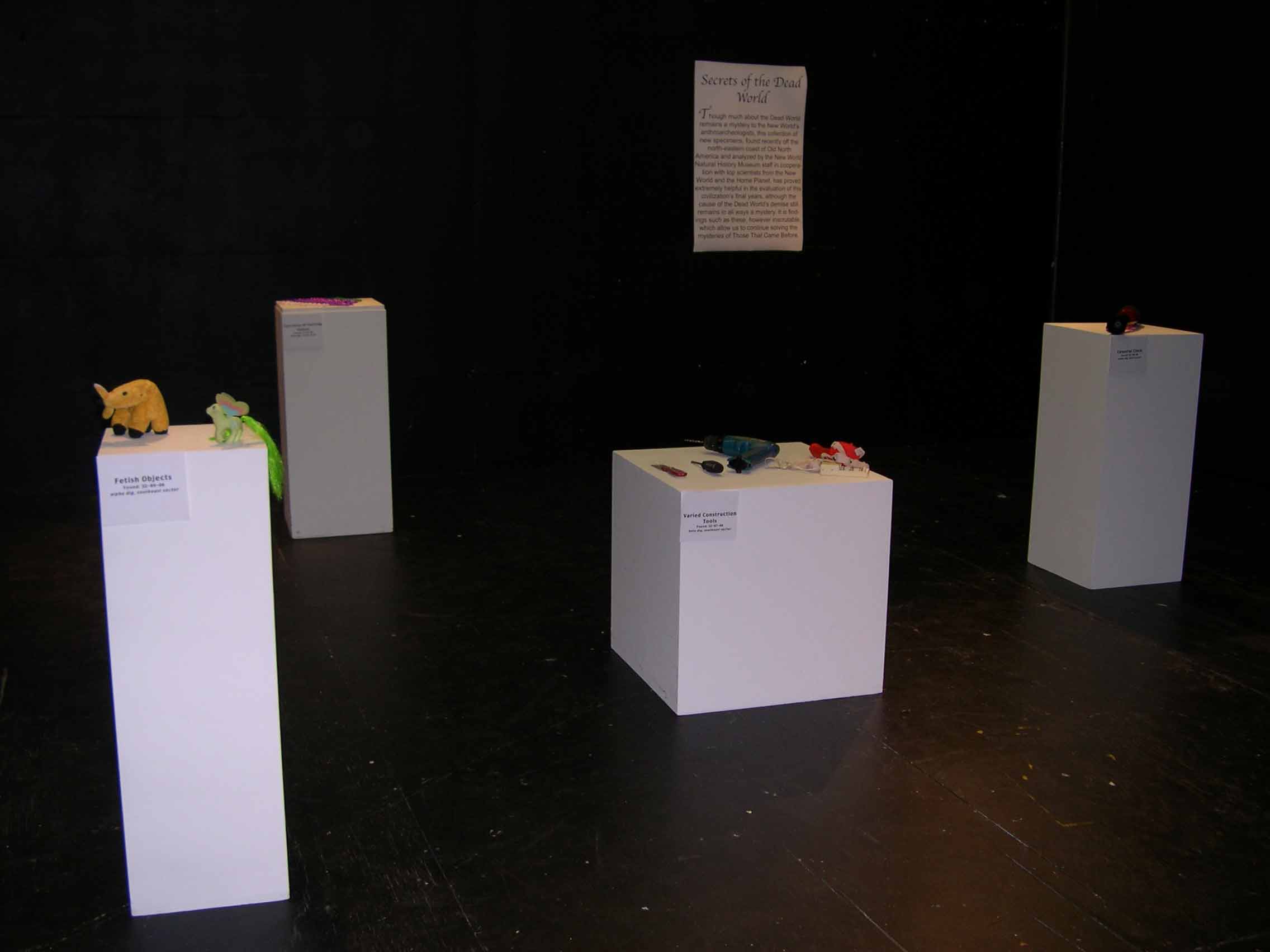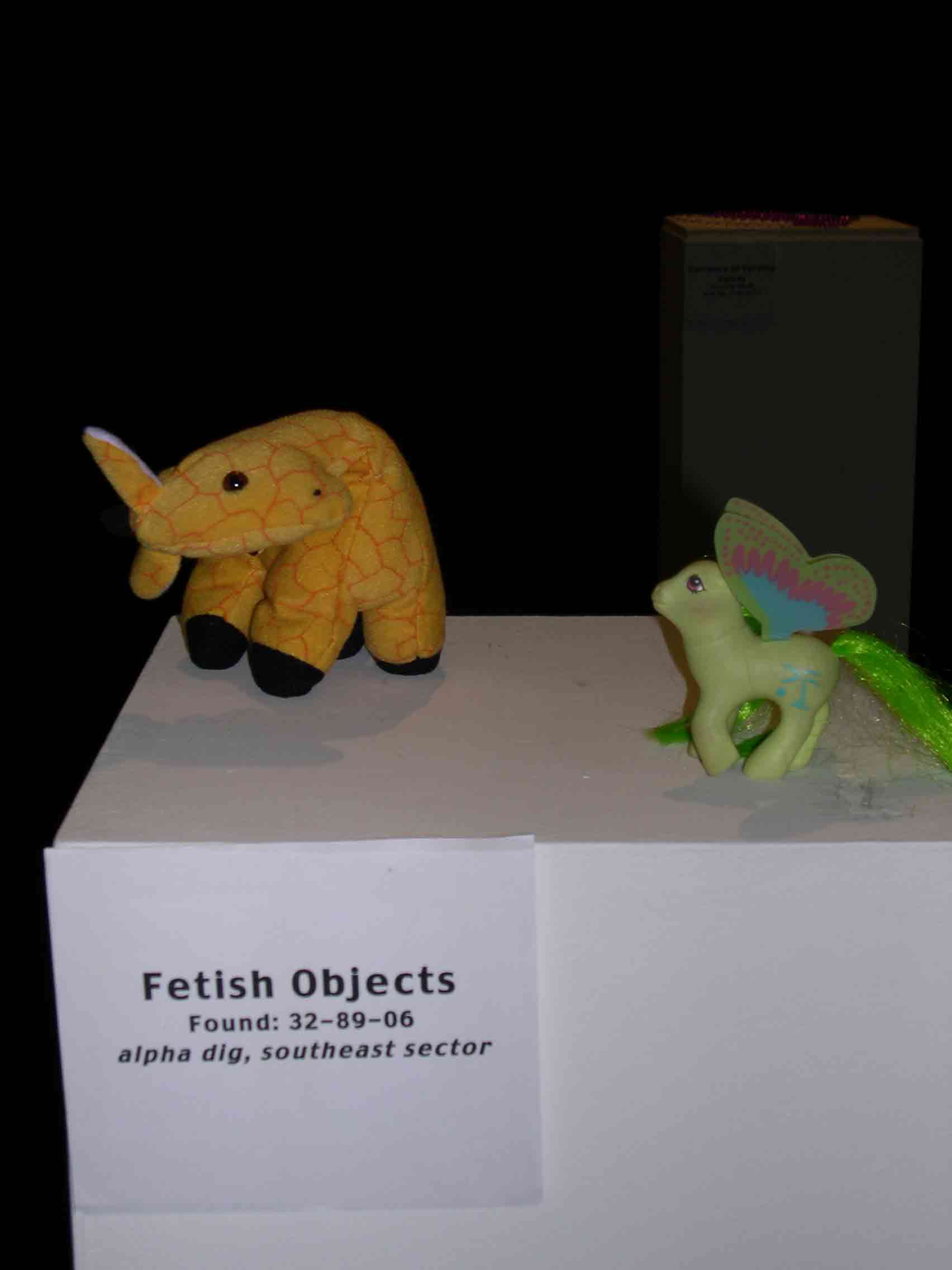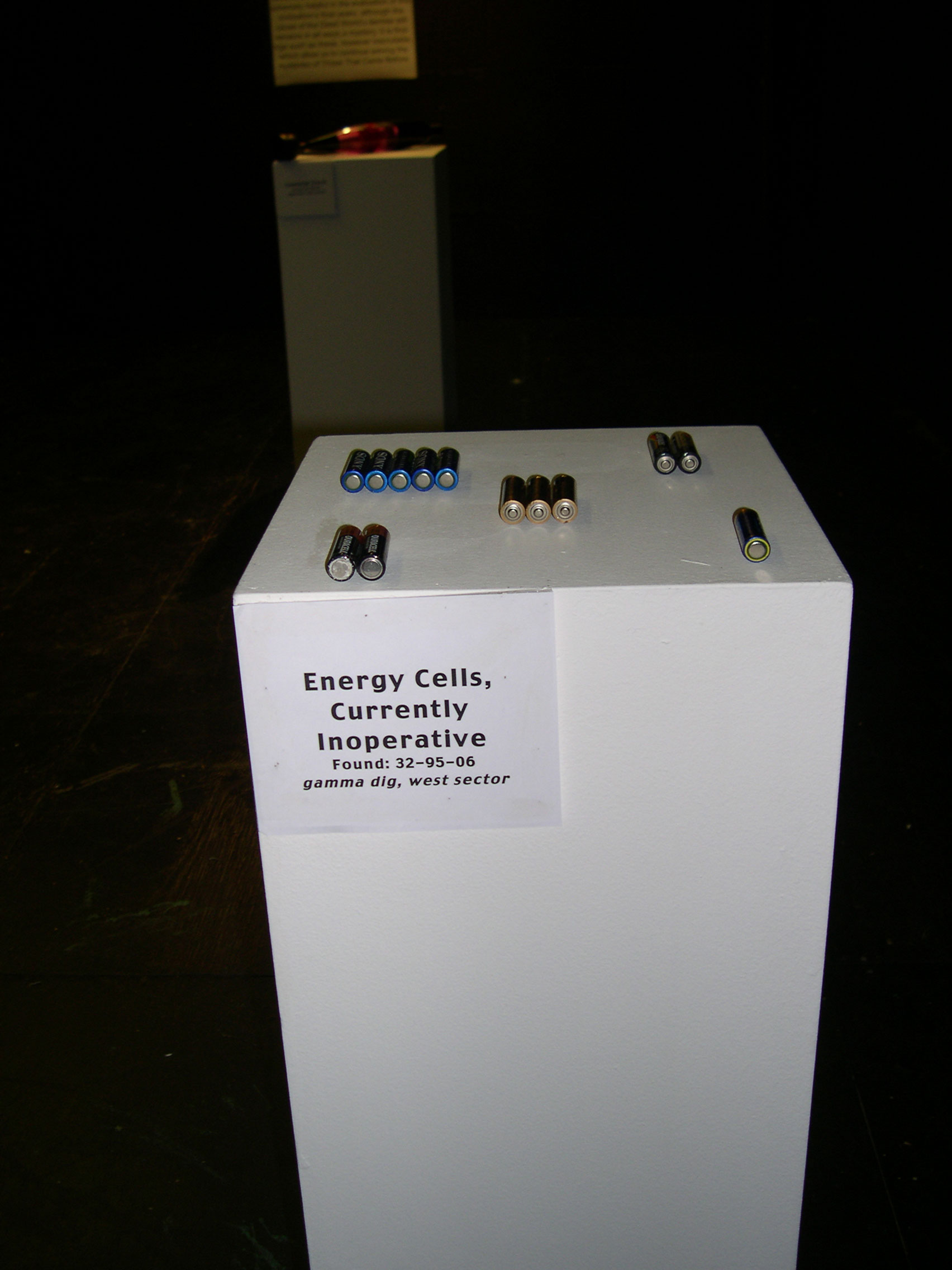art.308:sculpture studio
hannah piper burns
the
new world natural history museum: images






transcript of sound accompanying installation:
Welcome to “Secrets of the Dead World”, an exhibition made
possible by generous grants from the Dead World Anthroarcheological
Society in conjunction with various donors from the Home Planet, including
APCIML laboratories and their affiliates. Please enjoy your visit, and
remember, no physical contact with or visual records of the specimens
will be permitted. Thank you.
One of the most significant finds from this most recent excavation is
the pair of fetish objects to your left. Although they are different
sizes and made from different materials, they share several features
in common, such as the stunted proboscis, the growths sprouting from
the back of the head, and the ritualistic markings adorning the surface.
Several other like objects have been found in various other regional
digs, which has led us to believe that these objects were somewhat widely
used as a means to commune with a higher power. Their small size suggests
that they were not used in formal, public services, but rather personally
as altar centerpieces or talismans. Whether these objects of worship
are derivations on the same figure or actually representative of separate
deities remains unknown, and therefore so does the very basic nature
of this faith, though further excavation may yield more conclusive knowledge.
Moving directly forward, you will notice a group of closed loops comprised
of spheres of different diameters connected by extremely thin tubing.
Given their lightweight and flexible construction and their fixed size,
the prevailing theory on their function is that of currency. Many factors
and combinations thereof could define the value of each strand, including
sphere size, loop size, sphere color, and sphere opacity. These objects
could be easily exchanged and stored on one’s person, even in
great number, and their size prohibits them from being easily lost and
disordered. So far there have been no other specimens found in multiplicity
that fit the necessary criteria for currency.
Another especially noteworthy element of this exhibition is located
directly to your right on the low pedestal. This collection represents
the most comprehensive survey to date of the tools used by Those Who
Came Before, and NWNHM scientists are astonished that all objects were
unearthed in the same excavation site. All of these tools seem to serve
the same general function: that of the penetration of a surface in order
to insert fasteners or other materials. The smallest of these tools
would have been wielded by hand without the aid of a power source, while
the larger models seem to have compartments for some sort of energy
cell. The unsharpened ends of the smaller tools indicate that they were
used for crude or simple tasks, whereas the fine tip on the larger handheld
instrument in the center of the display indicates that it was designed
for more delicate operations on more fragile materials. The harness
on the tool on the far right of the group suggests that it was wielded
not in the hand, but rather attached to the person- presumably for increased
control over the tool in cases where precision cannot be trusted to
the unsteadiness of the hand. Each tool extends from its handle or harness,
and the surface of this extension seems to have been shaped in order
to best fit the material being altered and type of penetration desired.
Further to your right you will observe the most enigmatic find of this particular excavation, a vertical object that contains a mysterious fluid and an even more mysterious solid. Upon its discovery absolutely nothing was known of its possible function or meaning. However, casings containing a similar mixture of liquid and solid have been recently recovered from the Dead World, and sent to APCIML laboratories for testing. The APCIML staff’s findings indicate that when exposed to high temperatures the solid will begin to change state, separate from itself, and move about within the fluid, which remains in a static state. After a close analysis of this data, which also includes a comparison of heat levels to speed of the solid’s movement, the Dead World Anthroarcheological Society has put forth a theory that these instruments were kept at a constant heat level in order to keep the capsules’ contents at a fixed rate of motion, which was then used to measure the movements of the celestial bodies. The last major find from this particular excavation is this collection of small, differently marked but similarly shaped objects to the left of the fetish objects and directly in front of the celestial clock. They are adorned, as you may notice, with an arcane and strange version of our language, which uses our characters but not our words. These words must describe how each different object should be used, since all are designed for a similar purpose, and each bears the same symbols on each end. These symbols actually match those found in the compartments of the tools found in the same proximity, which leads us to assume that these are the previously mentioned energy cells, however, the insertion of these cells into their casings has proved fruitless as there has been no change in the behavior or capability of the tools. Anthroarcheologists employed both here and by APCIML have been diligently attempting to crack the code of this bizarre language in order to make sure the correct energy cells are matched with the correct tools. One word that can be found on each cell, no matter what the other markings on it may be, is “alkaline”, which is believed to be the name of the power source contained within the objects.
This concludes the exhibition. Please return this companion guide to the attendant and be sure to explore the other exciting installations currently open in the Dead World Natural History Museum.
St. Mary's College of Maryland
St. Mary's City MD 20686-3001
Back to Index
This page was last updated: May 6, 2005 4:24 PM